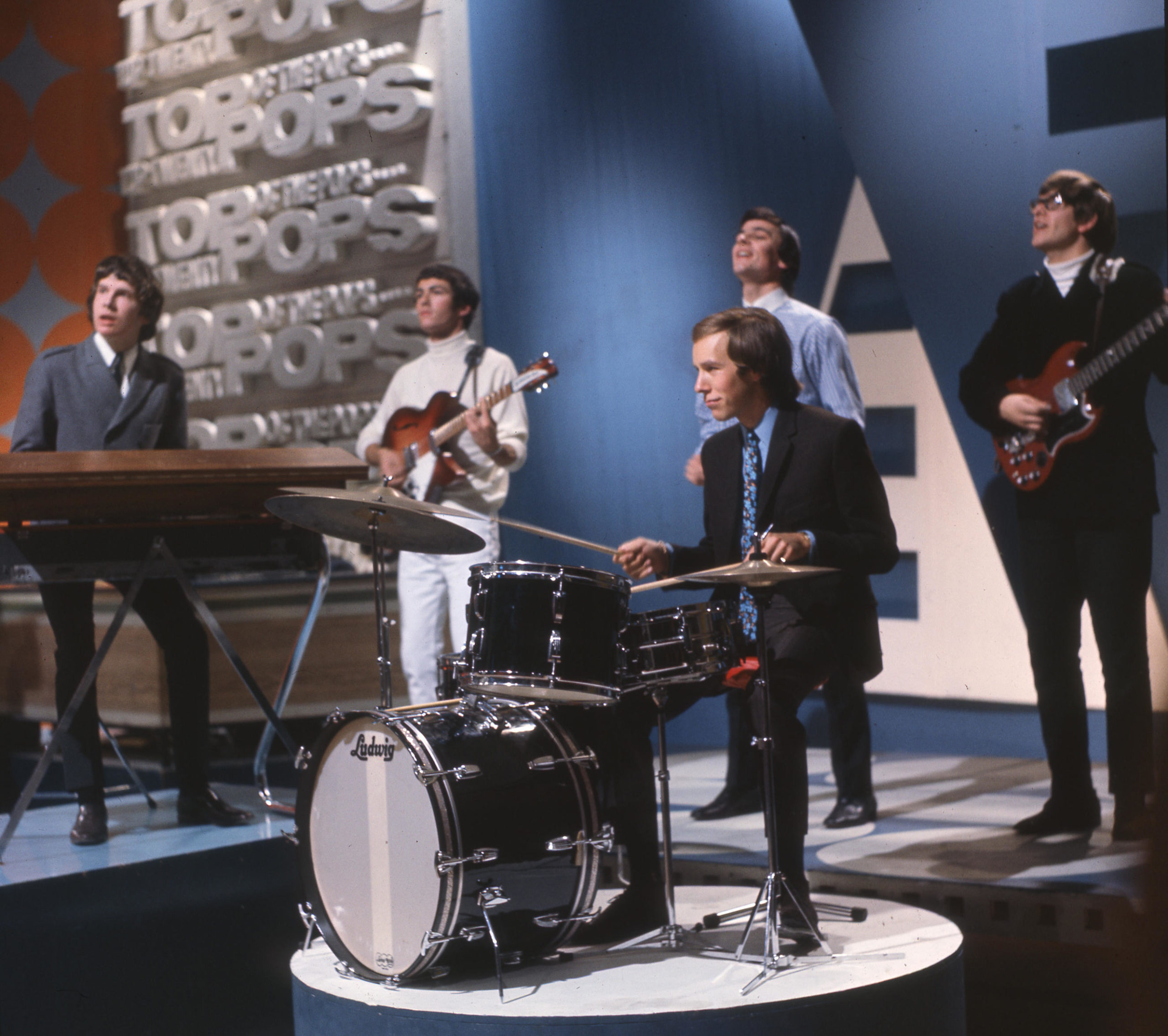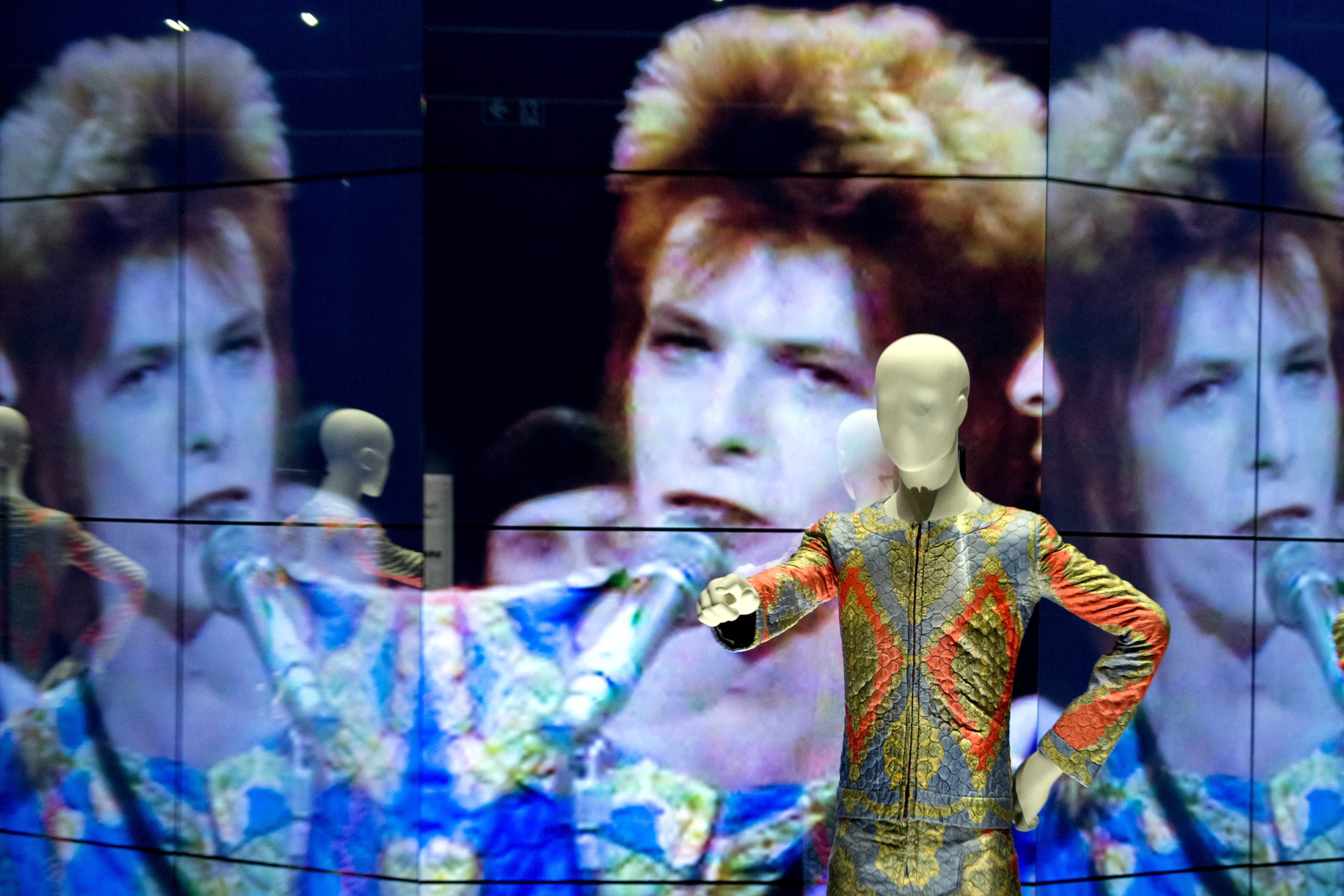
Since 2011, BBC4 has rerun episodes of Top of the Pops on a weekly basis. Bubbling away on the broadcaster’s last frontier of twentieth-century cultural output, edited versions of the legendary music showcase initially aimed to align with the original broadcasts, each shown exactly 35 years later, starting with episodes from 1976. Replacing the exhausted Top of the Pops 2 format, which ran throughout the 2010s, the reruns have become a rare phenomenon on free-to-air television: a time capsule buried on an at-risk patch of BBC landscape, transporting some viewers back to their youths, while enchanting younger audiences with sounds of the past.
“Top of the Pops has taken on a newfound meaning, memorialising past iterations of a world to which we now have no access”
The height of the coronavirus lockdown saw UK public service broadcasters achieve their highest combined share of TV viewing in more than six years, with much of the substitute programming comprising archival footage: from the Euro 1996 football tournament to David Bowie’s headline Glastonbury set in 2000. At a time when more involved means of cultural nostaglia such as club nights, exhibitions and themed events are cancelled, Top of the Pops has taken on a newfound meaning, memorialising past iterations of a world to which we now have no access. In a sense, the lockdown has provided viewers with the closest thing possible to the original experience of viewing Top of the Pops as a teenager in bygone decades, especially if growing up outside of urban centres. As music writer David Stubbs remembers of seeing Brian Eno for the first time on a 70s episode, Top of the Pops was “the show on which a sensation-starved younger generation depended for their weekly morsel of tinsel”.
Varying between shortened single episodes, Big Hits compilations and The Story Of specials (in which archival footage is combined with updated interviews to narrate a single year through the lens of Top of the Pops), the BBC is able to tell not only the story of 42 years of British pop culture, but also of its own role, real or imagined, in shaping it. The reruns are an act of self-fashioning, fuelling a question which has always accompanied influential cultural platforms: where does their true impact lie? In reflecting taste, or in prescribing it?
Scheduling patterns have meant that the intended 35-year gap between the original broadcasts and reruns has slipped slightly. The late 1980s, and 1989 especially (ten years after Top of the Pops’ peak audience of 17 million), were the focus of episodes shown during Britain’s lockdown period. This was the era of Jason Donovan and Kylie Minogue colliding with newcomers Soul II Soul, while established US giants Michael Jackson, Bobby Brown and Donna Summer tended to appear via music video or audio playback, such was the increasing globalisation of the UK chart, and the diminishing pull of Top of the Pops for megastars. For viewers in 2020, the episodes feel laden with the anticipatory energy of the fall of the Berlin Wall, the movement of disco towards rave culture, and the looming arrival of The Stone Roses and Oasis.
Like all the episodes in the format, The Story of 1989 places the year’s music in its social context at the twilight of Thatcherism, picking apart Coldcut and Lisa Stansfield’s track, People Hold On. The song was written about the government’s inaction towards the prevailing political climate, an aged Stansfield explains to the interviewer. The memory of the Lockerbie bombing was fresh, and the song was released just a month before the Hillsborough disaster. “People didn’t have much to hold on to,” she remembers. In the original studio footage, a still brown-haired Phillip Schofield asks Stansfield about dealing with the pressure of stardom. “I’m really flattered that people think that, but you can only do your best,” she replies in a broad Manchester accent. The pre-media training responses are as disorienting as the clothing; Stansfield wears a lilac suit and oversized matching beret, with her hair waxed into hooked sideburns.
“Every episode is received anew, irrespective of its age, exuding a kind of antique freshness that is difficult to find elsewhere”
From afar, the framing makes the viewer consider modern popular culture in terms of the historical events of the age, but the pandemic is overwhelming, so encompassing and destructive that it feels difficult to view what little culture remains through its parameters. The Story Of format threads together history and pop in a way only possible in retrospect, playing upon familiar tropes of cultural commentary to create the necessary narrative. These episodes give the odd, albeit comforting sense that people have always been tired with the old and wanting something new, forever rallying against their parents’ tastes. The story of Soul II Soul walking out of the BBC studio when asked to mime to their track Back to Life (a common source of tension between artists and the show’s producers) speaks to the conservatism, both cultural and social, of Top of the Pops in 1989. The implication here is that there was a snobbish, perhaps racialised element to the way the band were dismissed by the show’s hierarchy.
When watching the reruns, there are regular moments like this, when the artists and performers seem to outgrow and move beyond the format itself, which can look occasionally constrictive to the modern viewer. Commenting on BBC’s continual attempts to develop the show, David Stubbs observes that when watching Top of the Pops in the 1970s “the eye was always drawn to the darkness of the upper rafters, where the studio lights failed to reach… a reminder of how briefly the 1970s TV landscape glittered.” Come the early 1980s, he writes, pop in general felt overbearing, “a symptom of [Thatcherism’s] greedy, individualist, deregulated feeding frenzy”. For the young, modern viewer, the chance to compare the show to past memories of it is not available, a painful reality given the knowledge of how impactful certain performances were: David Bowie’s rendition of Starman in 1972, being one such moment. Instead, every episode is received anew, irrespective of its age, exuding a kind of antique freshness that is difficult to find elsewhere.
The first of the retrospective episodes, The Story of 1976 (2011) illustrates the influence that the programme had on musical taste during the era. In a modern-day interview, former Top of the Pops director Stanley Appel recalls that upon finding out the live running order from BBC executives, record promoters whose single had not been selected would immediately call the factory and order them to stop pressing the record; such was the impact of Top of the Pops on the UK singles chart. It’s a glimpse of the creative control that the BBC had at this point in time, which fed into the atmosphere of stardom within the studio itself.

In a further interview clip, Appel dismisses the age and sexualisation of young audience members as “banter” which would “probably” now be called sexist; The Story of 1976 also features several sections lauding Top of the Pops’ long-serving host Jimmy Savile, who presented for 20 years from 1964 and even returned for the closing episode in 2006. This is the contextual reality that informs our viewing experience of the reruns perhaps more than any other. The Dame Janet Smith Review, commissioned by the BBC in the wake of Operation Yewtree, concluded that the Top of the Pops environment was “an extraordinary mixture of sleaze and innocence”. It also found that the largest number of Savile assaults committed while recording a BBC show happened on Top of the Pops, with 19 cases confirmed.
“If the show is a cultural portal, then what we now know about its history makes it a highly contrived and contested one”
While episodes featuring Savile are no longer shown, the knowledge of what Top of the Pops enabled weighs heavily on any decision to continue rerunning episodes today. If the show is a cultural portal, then what we now know about its history makes it a highly contrived and contested one. There are no modern equivalents. Stars are now drawn to single blockbuster performances like the Super Bowl halftime show and the Grammys, while the understated TV studio format has been overwrought beyond recognition by endless reality talent shows. That the BBC’s role as a curator of taste has diminished is a positive, as reception has been democratised to some extent by the internet. The dwindling influence of the singles and album charts can be more earnestly mourned.
On The Story of 1976, author Lavinia Greenlaw remembers the show’s impact on her developing understanding of what it meant to be a teenage girl, shaping the contours of pop fandom via millions of television sets across the country. Watching back during the pandemic as acts like Siouxsie and the Banshees and New Order command the stage, that same feeling of enchantment is inescapable. Top of the Pops reruns provide a window to an era of now-shattered romance; they are to be enjoyed, admired, danced to and laughed at from afar, but luckily, never revisited.





